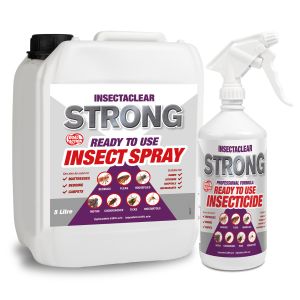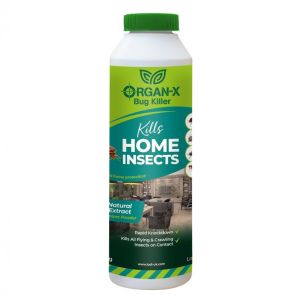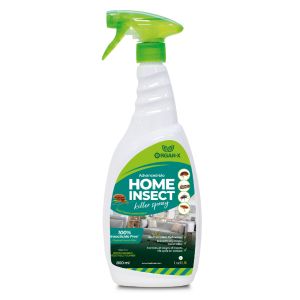How to get rid of fleas
Know your enemy
Fleas are a common pest, especially in a home with a pet cat or dog, so it is not unusual to have a problem with them from time to time. Understanding more about fleas and their life cycle will help greatly in effectively eradicating them from the home.
The flea life cycle has four stages: egg, larvae pupa and adult. Fleas can take anywhere from a couple of weeks to many months to reach the adult stage depending on conditions. An adult female flea can lay 40 eggs a day (that’s 2,000 eggs in one fleas lifetime!) meaning that flea infestations can quickly get out of control.
Fleas need warm and humid conditions to thrive. To develop and survive fleas need humidity of 50% + and temperatures between 13 – 34°C. This is why fleas are less of a pest in winter and start to become a problem in spring!
DID YOU KNOW
Fleas can jump up to 20 cm high. That’s 150 times its own height.
Fleas only spend one quarter of their life on the host animal. This means that effective treatment must be applied to the whole affected home to treat the infestation completely. Fleas can also survive a long time without a food source to it is wise to treat all rooms of the house, even if pets may not have been in there for a while.
Fleas are a known spreader of disease so it is important for the health reasons that infestations are dealt with quickly.
DID YOU KNOW
The cat fleas is the most common flea in the world, most fleas found on dogs are actually cat fleas!

How to Spot Fleas
Adult fleas are around 1-2 mm long and reddish brown in colour. They are very flat insects making them hard to spot in an animal’s fur. Quite often the first signs of fleas are pets scratching more often than usual or noticing bites on yourself, especially around the ankles.
Look in the fur of pets to see if any fleas can be spotted, use a special flea comb which is designed to catch these thin insects. Another way to confirm if there is a flea infestation is to lay down traps. Adult fleas are attracted to light so if you can place a light near the trap soon fleas should be attracted, if you have them.

How to kill fleas
Because fleas only spend a small amount of their lifetime on their host (cat or dog) it is important to thoroughly treat all areas of your home.
Critterkill smoke bombs are a great way to control and remove pests from inside your home. The insecticidal smoke from the smoke bombs will kill any insect on contact making them an ideal solution for large or difficult to reach areas.
Previously only for professional use, these smoke bombs are now available to the public. Ideal for use in the home, storage areas, commercial properties and small animal housing.
Please read all warnings, precautions and directions before using the smoke bomb.
Spray them away with Critterkill Flea Killer Spray.
APPLICATION: Thoroughly spray all hard surfaces around the flea infestation. Ensure that no areas are missed such as small cracks and crevices where fleas could be inhabiting. Generously apply at a ratio of around 50 ml of product per square meter upon surfaces, or spray short burst directly at fleas. Do NOT apply Critterkill Flea Killer Spray directly to pets.
Vacuuming
Spend some quality time with the vacuum cleaner. Vacuums are great for sucking up fleas in all stages of their life cycle. Not only that but vacuuming removes the fleas food source so that the larvae finds it harder to mature. Regular vacuuming can really help keep fleas at bay so try and do it as often as possible.
Fleas can lie dormant for a long time as eggs, and are roused into hatching by heat and vibrations. The vibrations of the vacuum cleaner should encourage fleas out, which is great for sucking up as many as possible!
Top Tip: Always empty the vacuum cleaner as soon as you are finished, preferably into a sealed bag and into an outdoor bin. Otherwise fleas may just crawl back out of your vacuum cleaner!
Vacuum all flooring; including carpets, rugs, vinyl and hard flooring. Pay special attention to skirting boards, nooks and crannies and try to get underneath furniture as well. Flea larvae dislikes light so will hide in dark areas.
Vacuum furniture; vacuum sofas, including under cushions and in any seams. Any other soft furnishings should also be vacuumed i.e. armchairs, headboards and fabric covered bed bases.
Washing
Because we know that fleas cannot survive in temperatures above 35°C, a hot wash or cycle in the tumble dryer is a good way to kill fleas in clothes and bedding. Try to be systematic in treating washables so that clean clothes are kept sealed in bags until the house is treated, or uncleaned clothes are kept in sealed bags if the house has been treated.
Monitoring and prevention of fleas
Monitor fleas by setting out traps for them. Adult fleas are attracted to light sources so if possible leave a light on overnight and inspect what you have caught in the morning.
Fleas are hard to eradicate in just one treatment so keep treating and cleaning until the problem is solved. Most pets spend time outside, meaning fleas can be re-introduced into the house. They can even be transported in on humans from long grass or other infested areas. Early detection makes killing fleas easier!
Keep up with vacuuming, at least once a week, and comb through pets fur. It is a good idea to keep this up through the seasons fleas like the best (spring and summer in the UK).
>Sources: http://www.petmd.com/dog/parasites/evr_multi_understanding_the_flea_life_cycle | https://en.wikipedia.org/wiki/Cat_flea |




